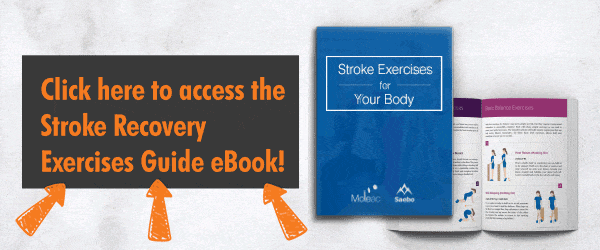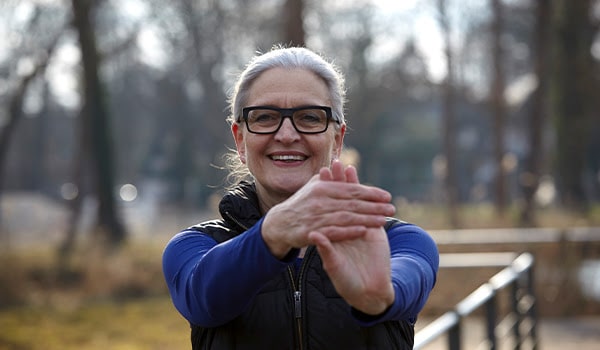

After a stroke or a traumatic brain injury, patients often lose control of their arms and hands. This makes carrying out any basic task difficult without assistance.
This is why physical therapy plays an important role in rehabilitation. Physical therapists suggest the most appropriate ways to support neuroplasticity and get the brain rebuilding signals to muscles in your arms. This includes exercises to simulate basic movements. So, what arm exercises can you perform to improve rehabilitation?

Basic stretches are important to regain full arm strength. Stretching reduces the risk of spasticity as well as joints stiffening.
Shoulder Stretch
- Keep your arms straight.
- Raise to shoulder height and hold for 30 seconds.
- Lower to knees and hold for 30 seconds.
- Repeat 5 times.


Shoulder Stretch
- Keep your arms straight.
- Raise to shoulder height and hold for 30 seconds.
- Lower to knees and hold for 30 seconds.
- Repeat 5 times.
Forearm Stretch
- Clasp your hands together.
- Turn them so the stretching arm is palm-side up.
- Stretch out and hold it for 30 seconds.
- Repeat for the other arm
- Repeat 5 times.
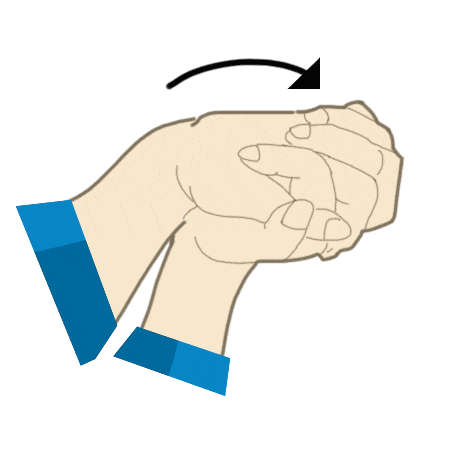

Forearm Stretch
- Clasp your hands together.
- Turn them so the stretching arm is palm-side up.
- Stretch out and hold it for 30 seconds.
- Repeat for the other arm
- Repeat 5 times.
- Place a bottle at end of reach.
- Clasp hands together and stretch out across table surface keeping elbows straight.
- Slide gently towards the bottle and move across until fully stretched and hold.
- Slowly bring arms back to your body bending elbows as you go.
- Repeat 7-10 times
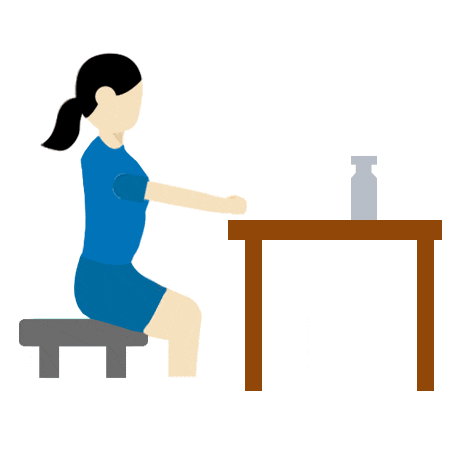

- Place a bottle at end of reach.
- Clasp hands together and stretch out across table surface keeping elbows straight.
- Slide gently towards the bottle and move across until fully stretched and hold.
- Slowly bring arms back to your body bending elbows as you go.
- Repeat 7-10 times
These basic exercises may cause a little discomfort but it shows that the muscles are strengthening. The increased tension will reduce risks of stiffening or muscle spasticity.

Intermediate exercises are great for practicing basic daily tasks. The aim of these is to kick-start neuroplasticity in the brain and reattach synaptic signals to muscle movements.
Cup Lift
- Place your hand on table with your elbow straight.
- Slowly wrap your fingers around a cup keeping thumb level with your forearm.
- Lift cup up with hand with forearm staying on table before lowering back down.
- Repeat 3 times.
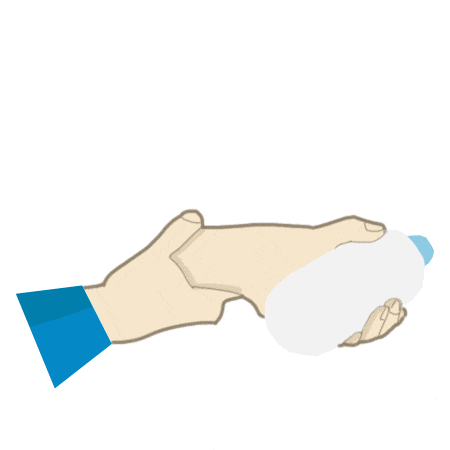

Cup Lift
- Place your hand on table with your elbow straight.
- Slowly wrap your fingers around a cup keeping thumb level with your forearm.
- Lift cup up with hand with forearm staying on table before lowering back down.
- Repeat 3 times.
Bicep Lift
- Place your arm on table and raise elbow to 90˚.
- Slowly move lower arm towards you as far as possible. Hold for 10 seconds.
- Slowly lower to table with arm flat on surface.
- Repeat 5 times.


Bicep Lift
- Place your arm on table and raise elbow to 90˚.
- Slowly move lower arm towards you as far as possible. Hold for 10 seconds.
- Slowly lower to table with arm flat on surface.
- Repeat 5 times.
Arm and shoulder rotation
- Lay on your back and slowly lift your arm until straight.
- Slowly bend your elbow and touch your head with the hand.
- Lift and straighten your arm.
- Slowly bend your elbow and lower your arm to touch the opposing shoulder.
- Lift your arm and lower it down to your side.
- Repeat steps for the other arm
- Repeat 3 times.
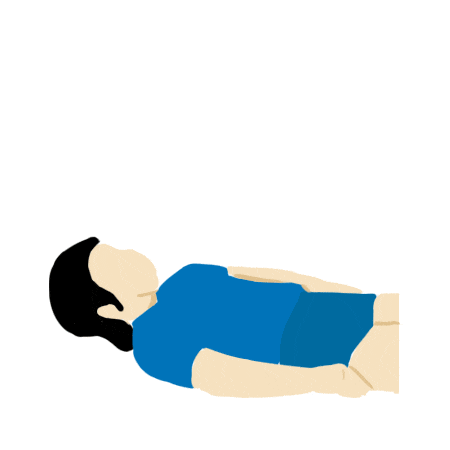

Arm and shoulder rotation
- Lay on your back and slowly lift your arm until straight.
- Slowly bend your elbow and touch your head with the hand.
- Lift and straighten your arm.
- Slowly bend your elbow and lower your arm to touch the opposing shoulder.
- Lift your arm and lower it down to your side.
- Repeat steps for the other arm
- Repeat 3 times.
By simulating regular movements, the brain slowly rebuilds connections and allow you to perform basic tasks. Coordinating different areas of a limb gradually allows more control over your entire limb.

When practicing arm exercises, work with a physical therapist to guide you in exercises which will work best for you. Don’t be afraid to ask someone to help you do these exercises if you feel you need the assistance.
Progress is always in arms reach!
Follow us on social media!
Stroke Exercises Guide eBook
Get detailed information on stroke recovery exercises for different parts of the body with various intensities and customisations to suit your needs.
References:
1. Flint Rehab. (2022)
2. National University Hospital Singapore. (2022)
3. Stroke Organization New Zealand. (2017)
3. Web MD. (2012)
Contact: [email protected]
This document does not constitute the practice of medical consultation nor medical advice. Always seek the advice of your treating physician and/or specialist.

